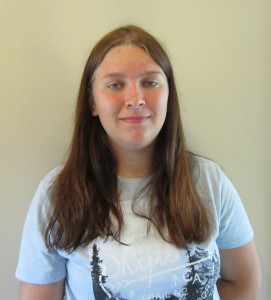By Allison Spear – 11th Grade, Seneca Valley High School
On July 6, a group of 23 Seneca Valley High School students, teachers, and friends met in the Pittsburgh airport, anxiously awaiting their flight to Quito, Ecuador. The group was travelling south to learn more about unique species in the Galápagos Islands and to have a better cultural understanding of foreign countries: an opportunity that biological and geological experts dream of experiencing.
We began our tour on Santa Cruz Island and stopped at the Charles Darwin Research Station to see free-roaming Galápagos Giant Tortoise, a species endemic to the Islands. These animals are very rarely seen outside of a zoo. The tortoise, which can live between 150 to 200 years, have recently gone under conservation efforts to prevent the extinction of many endangered subspecies.
After seeing the tortoise, we also saw our first group of Darwin’s finches. We observed the genetic adaptations, like the curved beaks of the cactus finch, which contributed to Darwin’s theory of evolution.
The following day, we arrived at Isabela Island after sailing for 2 hours through giant waves and terrible currents. We drove to a flamingo grove, went to a tortoise farm, and saw sea lions relaxing on the beach after we snorkeled.
Before we could leave Isabela Island to sail back to the main island, we were instructed to wash off any sand on our bodies. Conservationists want to prevent the transportation of sand between islands, in order to preserve each island’s natural habitat and balanced ecosystem for future generations.
We spent the next day on Santa Cruz Island, snorkeling in Tortuga Bay in the morning and spotting blue heron, turtles, and even sharks. In the afternoon, we visited a natural sinkhole created by a dry magma chamber. After this brief lesson in volcanology, we hiked up a hill to view the island from a higher elevation. From this vantage point, we could see the 7 different micro-climates on the Islands, which are only around 20 meters apart. Though this is not one of the seven wonders, it is an incredible sight that any ecologist would relish. When some students were asked what they had learned on this trip, this was one of the most common answers.
On our last day in Quito, we traveled to the equator. During the trip, our tour guide explained that Quito’s electricity is 100% hydroelectric, and scientists from Galápagos want to make all energy on the Islands, including cars, run by renewable energy by 2020. The tour guide also explained parts of Ecuador’s tumultuous history, including their transition from a dictatorship to a democracy, their strained diplomatic relationship with Peru, and the controversy over their most recent election.
When we arrived at the equator, we learned about some scientific phenomena that occur there. At one point, our guide put water in a tub that was two feet above the ground with a drain hole in the center. He placed the tub in three different locations to let the water fall to the concrete below. Directly above the equator, the water fell straight down, but a yard to the south, it swirled clockwise and a yard to the north, it fell counter-clockwise. “It’s witchcraft” exclaimed Zach, a graduating Seneca Valley student.
Sarah, a recent Seneca Valley High School graduate, vowed to move to Quito after she graduates from American University, where she will be studying International Studies this fall. She strongly believes this trip helped open her eyes to the world around her. Other students, like Zach, who will study Biology at Allegheny College in the fall, agreed that the trip was a dream come true. “This is the goal for all biologists, and I got to do it at eighteen!” said Zach.
 Allison Spear will be entering 11th grade at Seneca Valley High School in the fall. She lives in Cranberry Township. She participated in a summer camp at Pittsburgh Filmmakers to learn how to film and edit videos. She enjoys marching band, strumming her guitar, and having fun with her friends.
Allison Spear will be entering 11th grade at Seneca Valley High School in the fall. She lives in Cranberry Township. She participated in a summer camp at Pittsburgh Filmmakers to learn how to film and edit videos. She enjoys marching band, strumming her guitar, and having fun with her friends.
Leave a Comment